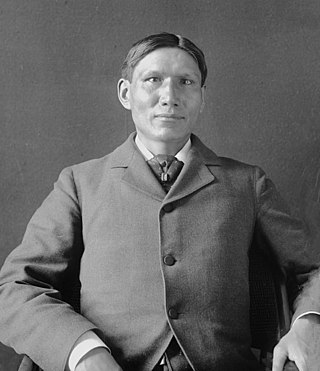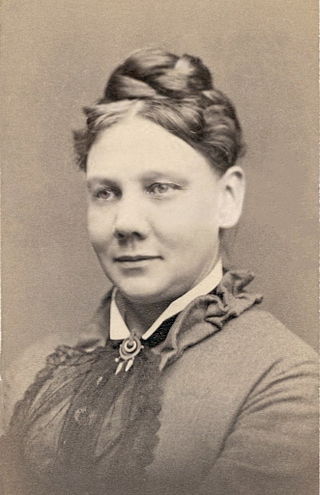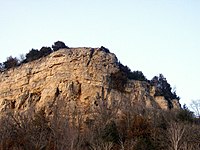
The Lakota are a Native American people. Also known as the Teton Sioux, they are one of the three prominent subcultures of the Sioux people, with the Eastern Dakota (Santee) and Western Dakota (Wičhíyena). Their current lands are in North and South Dakota. They speak Lakȟótiyapi—the Lakota language, the westernmost of three closely related languages that belong to the Siouan language family.

The Sioux or Oceti Sakowin are groups of Native American tribes and First Nations peoples in North America. The modern Sioux consist of two major divisions based on language divisions: the Dakota and Lakota; collectively they are known as the Očhéthi Šakówiŋ. The term "Sioux" is an exonym created from a French transcription ("Nadouessioux") of the Ojibwe term "Nadowessi", and can refer to any ethnic group within the Great Sioux Nation or to any of the nation's many language dialects.

Winona County is a county in the U.S. state of Minnesota. As of the 2020 census, its population was 49,671. Its county seat is Winona. Winona County comprises the Winona, MN Micropolitan Statistical Area.

Winona is a city in and the county seat of Winona County, Minnesota, United States. Located in bluff country on the Mississippi River, its most noticeable physical landmark is Sugar Loaf. The population was 25,948 at the 2020 census.

White Bear Lake is a city in Ramsey County in the state of Minnesota, United States. A small portion of the city also extends into Washington County. The population was 23,769 at the 2010 census. The city is located on White Bear Lake, one of the largest lakes in the Minneapolis–Saint Paul metropolitan area.

William Windom was an American politician from Minnesota. He served as U.S. Representative from 1859 to 1869, and as U.S. Senator from 1870 to January 1871, from March 1871 to March 1881, and from November 1881 to 1883. He also served two non-consecutive times as Secretary of the Treasury from March to November 1881, and from 1889 to 1891, under three Presidents. He was a Republican. He was the great-grandfather of actor William Windom, who was named for him.

Charles Alexander Eastman was an American physician, writer, and social reformer. He was the first Native American to be certified in Western medicine and was "one of the most prolific authors and speakers on Sioux ethnohistory and American Indian affairs" in the early 20th century.

Lover's Leap, or Lovers' Leap, is a toponym given to a number of locations of varying height, usually isolated, with the risk of a fatal fall and the possibility of a deliberate jump. Legends of romantic tragedy are often associated with a Lover's Leap.

Lake Pepin is a naturally occurring lake on the Mississippi River on the border between the U.S. states of Minnesota and Wisconsin. It is located in a valley carved by the outflow of an enormous glacial lake at the end of the last Ice Age. The lake formed when the Mississippi, a successor to the glacial river, was partially dammed by a delta from a tributary stream and spread out across the ancient valley.
The Mdewakanton or Mdewakantonwan are one of the sub-tribes of the Isanti (Santee) Dakota (Sioux). Their historic home is Mille Lacs Lake in central Minnesota. Together with the Wahpekute, they form the so-called Upper Council of the Dakota or Santee Sioux. Today their descendants are members of federally recognized tribes in Minnesota, South Dakota and Nebraska of the United States, and First Nations in Manitoba, Canada.

Seth Eastman was an artist and West Point graduate who served in the US Army, first as a mapmaker and illustrator. He had two tours at Fort Snelling, Minnesota Territory; during the second, extended tour he was commanding officer of the fort. During these years, he painted many studies of Native American life. He was notable for the quality of his hundreds of illustrations for Henry Rowe Schoolcraft's six-volume study on the history of Indian tribes of the United States, commissioned by the US Congress.

Split Rock Creek State Park is a state park of Minnesota, USA, located in Ihlen, or just south of Pipestone.

Pike Island is an island at the confluence of the Mississippi and Minnesota rivers in the southwestern-most part of Saint Paul in the U.S. state of Minnesota. The island is managed as part of Fort Snelling State Park and is within the Mississippi National River and Recreation Area. For centuries, Dakota people have considered the area of the island to be a sacred place where they moved with the seasons to find food and resources. The island is named after Zebulon Pike, who negotiated the United States government purchase of the area from Mdewakanton Sioux Indians in 1805.

The Dakota are a Native American tribe and First Nations band government in North America. They compose two of the three main subcultures of the Sioux people, and are typically divided into the Eastern Dakota and the Western Dakota.

White Bear Lake is a lake in northeastern Ramsey County and western Washington County in the U.S. state of Minnesota, in the northeast part of the Minneapolis-St. Paul metropolitan area. The city of White Bear Lake takes its name from the lake.

Eli Lundy Huggins was an American Brigadier General and author who received the Medal of Honor for his actions during the Indian Wars. He was also the commander of the 8th Volunteer Infantry Regiment during the Spanish–American War.
The history of Winona, Minnesota as a settlement begins with the foundation in 1851 in what was then Minnesota Territory on the West side of the Mississippi River. The site was of the village of Keoxa of Dakota people. The name "Winona" (Wee-no-nah) was noted to be the name of a first-born daughter in the local Dakota language.

Mary Henderson Eastman was an American historian and novelist who is noted for her works about Native American life. She was also an advocate of slavery in the United States. In response to Harriet Beecher Stowe's anti-slavery Uncle Tom's Cabin, Eastman defended Southern slaveholding society by writing Aunt Phillis's Cabin: or, Southern Life As It Is (1852), which earned her considerable fame. She was the wife of the American illustrator and army officer Seth Eastman.
















